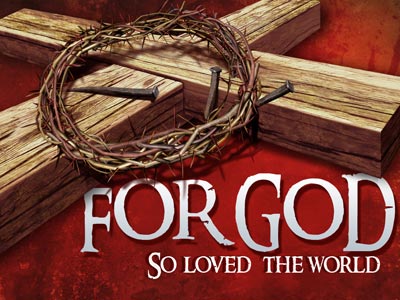-
Reflections On The Introit Sign Of The Cross Series
Contributed by W Pat Cunningham on Dec 8, 2019 (message contributor)
Summary: Let the cross embrace us.
Tuesday of the 2nd Week in Advent 2019
The Sign of the Cross
Those of us that are daily immersed in the Word of God, specifically in the Sacred Scriptures, sometimes forget that what we read each day are revolutionary words. They are revolutionary words intimately associated with the first revolutionary Word, the Second Person of the Trinity, who is Jesus Christ, our Lord. A little later in his prophecy, Isaiah calls the nation of Israel, pressured throughout the century of Isaiah’s ministry by Assyria from the north and Egypt from the south, a “worm,” a “little one.” And they were. Both northern and southern kingdom were weakened either by wars or the payment of tribute to avoid wars. But the Word of God promises to make this pathetic collection of tribes into a thresher for wheat, new and sharp. That is, nothing could stand in the way of the eventual triumph of Israel. In today’s reading, he seems to be comparing the plan of God to a bulldozer, like those building an Interstate highway. God will level mountains and fill in valleys so that the exiles of Israel may return. And He will, as always, take a personal interest in the welfare of His people, His flock, pasturing them gently and keeping them in His loving arms. All this is ours if we repent and follow His will.
In Matthew’s brief Gospel story today, the revolutionary words continue, filling in just how much Our Lord is willing to do in order to pasture us, His flock. It is revolutionary for a shepherd, losing one sheep, to abandon 99% of the flock on the off-chance he will find the lost one. That’s senseless in human economic terms. “Write off the lost critter and protect the ones you have left.”
But that’s not Our Lord’s way of pasturing the flock. The need of just one human being for salvation is enough for Him to bend down from heaven, take on human nature, live and teach and heal and subject Himself to humiliation, torture and crucifixion so that one human being–and all the rest of us–can have access to rebirth, regeneration, eternal life in a resurrected body. He loves each of us that much, and until the end of our life He will pursue us until we either accept His redemption, or reject it out of hand. The phrase is most apt: God or nothing.
That is why in every Mass, indeed in every liturgical celebration, we begin with the sign of the cross. The babe of Bethlehem, the God-man in the feed-box of a stable, only makes sense in the light of the Resurrection, and therefore in the shadow of the cross on Calvary. Every one of us must and will die, sooner or later. Because of original sin, and our own personal sin, on our own we would have no chance of a happy ending, of eternal happiness. Not a snowball’s chance in hell. But we are not just on our own, a stupid, weak sheep wandering about aimlessly waiting for the jaws of evil to clamp on our necks. No, we are called by the Shepherd who laid down His life for His flock.
And so, as we enter the Holy Sacrifice of the Mass together, chanting a psalm, and assemble as the Lord’s flock, we begin our prayer with the sign of the cross. Only the cross of Christ gives us a reason to go on, a confidence that our prayer is heard and that our personal consecration to Our Lord has any value. And, moreover, as we make the sign of the cross we invoke the one Being whose will is our salvation. We say, loudly and distinctly, “in the name of the Father and of the Son and of the Holy Spirit.” Because it is the one will of the one God that all humans be saved.
Stephen White sums it all up: “Death comes for us all. It is the wage of our sin. Thanks to the babe of Bethlehem, it is also our one true hope for healing. When we understand all this – if we live this way and face our own inadequacy and brokenness this way – we will help others, all throughout this valley of tears, to do the same. And we will be sharing in the work of the One who makes all things new.”
So when we begin our celebration, when we begin any prayer with the sign of the cross, let’s do two things. First, let the cross embrace us. Make it beginning with the top of your head, down to the bottom of your heart, and then finish the embrace all the way to the sides of your arms. Then, like a big divine hug, let the Lord hold you, as Isaiah promised, close to His heart.

 Sermon Central
Sermon Central



